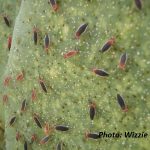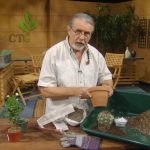Pests on Agave, Yucca, Cactus
encore date: August 27, 2011
original air date: July 30, 2011
What’s that pest destroying your drought-loving agaves, yuccas, and cacti? Wizzie Brown, Texas AgriLife Extension Service Extension Program Specialist- IPM identifies pests like agave snout weevils, cactus bugs, and more, and explains how to control them. On tour, visit Jeff Pavlat’s diverse succulent garden for design ideas with these drought tolerant plants. Daphne Richards explains how to grow beneficial aloe vera and how to pinch a plant for lush growth. John Dromgoole mixes up a soil blend for succulents.








 Jeff Pavlat
Jeff Pavlat Succulent Pests
Succulent Pests Wizzie Brown
Wizzie Brown Daphne Richards
Daphne Richards Potting mix for cactus plants, sedums and other succulents
Potting mix for cactus plants, sedums and other succulents John Dromgoole
John Dromgoole